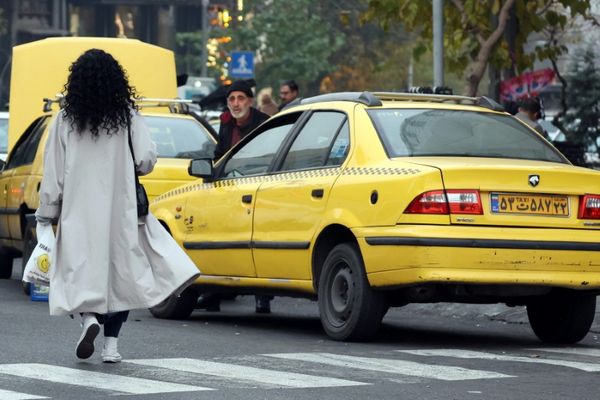
As the Trump administration makes significant cuts to Government expenditure, there are reports that a number of employees at America's foreign aid agency might be reduced from roughly 10,000 to less than 300 worldwide.
All employees, including many who are stationed overseas, are already scheduled to be placed on administrative leave at midnight on Friday, with the exception of a few key personnel. A strategy is being established for return travel and the termination of non-essential contractors, according to an online notification.
The cuts come as President Donald Trump’s team accused the United States Agency for International Development (USAID) of wasting taxpayer money and failing to align with “America First” policy priorities.
The US is the world's largest single supplier of humanitarian aid. Its contractors handle a large portion of its work, and it has bases in over 60 countries in addition to working in dozens more. Last month, Mr Trump froze foreign aid and reportedly during the same week urged Jordan and Egypt to open borders for the one million fleeing Gaza.
He was quoted as saying to a Mail reporter: “You're talking about a million and half people, and we just clean out that whole thing. You know over the centuries it's had many, many conflicts. And I don't know, something has to happen.
“It's literally a demolition site, almost everything is demolished and people are dying there so I'd rather get involved with some of the Arab nations and build housing at a different location where they can maybe live in peace for a change. I'd like Egypt to take people and I'd like Jordan to take people.”
Meanwhile, the world's richest economies, from Germany to the UK, are also seeing their help funds decline. In 2024, the UN covered less than half of its humanitarian funding goal of over $50 billion for the second consecutive year, demonstrating how underfunded international aid agencies are at a time when more relief donor donations are needed than ever due to an increase in conflicts and natural catastrophes.
With all of this in mind, how much foreign aid does the UK supply and how does it compare with other countries?
How much foreign aid does the UK give?
The Government aims to allocate 0.7 per cent of the UK's Gross National Income (GNI) to overseas development aid every year.
The GNI is the UK's yearly output of goods and services plus any foreign money we get from abroad.
Since 1970, the United Nations (UN) has set a goal of 0.7 per cent for all developed nations. Although the UK Government has been committed to reach that goal since 1974, but it only achieved it for the first time in 2013.
According to The Guardian, the UK’s GNI is currently just over 0.5 per cent.
In 2016, the UK spent £13.4 billion on overseas aid, meeting the 0.7 per cent target.
The UK Official Development Assistance (ODA) spend increased by £1,363 million (11.9 per cent) in 2022 to £12,786 million. Meanwhile, UK core funding to multilaterals was £3,146 million (24.6 per cent of overall UK ODA), whereas UK bilateral ODA spending was £9,640 million (75.4 per cent of total UK ODA).
According to the Government website, the UK’s foreign aid in 2022 went to developing countries and multilateral organisations.
Before 2022, the UK gave about half of its country- or region-specific aid to Africa. In 2022, ODA to Africa decreased by 28.1 per cent.
Asia is the second-largest recipient of UK bilateral aid including countries like Afghanistan, Bangladesh, Pakistan, Syria, and Yemen.
In 2022, the top three recipients of UK bilateral country specific ODA were Afghanistan (£353 million), Ukraine (£342 million) and Nigeria (£110 million).
How does that compare with other countries?
Norway
Norway is the largest donor of ODA, accounting for 1.09 per cent of GNI.
The Scandinavian country has met the UN’s target every year since 1976 and has committed to spending one per cent of its GNI almost every year since 2013.
In December, the Norwegian government allocated US$91 million for humanitarian assistance in Ukraine.
United States
With $66 billion from the US in 2023, USAID is a global leader in health, education, and humanitarian relief, particularly in the fight against tuberculosis, HIV/AIDS, and malaria.
However, the US is still a small contributor relative to GNI, at 0.24 per cent.
Mr Trump told reporters on Sunday that USAID had “been run by a bunch of radical lunatics and we’re getting them out,” while Tesla CEO and special government employee Elon Musk added it was “time for it to die”.
Many nations in the Global South will suffer greatly if the USAID's shuts down. Among the biggest development organisations in the world, USAID finances initiatives that help millions of people, such as promoting peace accords in Colombia and halting the spread of HIV in Uganda.
The US government budget allots about $40 billion a year for development and humanitarian assistance. There are concerns about how these funds will be used going forward and the long-term effects on international development initiatives if USAID is disbanded.
Under President John F. Kennedy, USAID was established in 1961 by the Foreign Assistance Act, which consolidated a number of pre-existing initiatives under the new organisation.
Germany
Germany is a little above the UK, with 0.8 per cent GNI, but it is the second-largest donor of humanitarian assistance, contributing 2.2 billion dollars in 2024.
Additionally, Germany supplies troops for the UN peace missions MINURSO, UNIFIL, and UNMISS. It is also the fourth-largest contributor to the UN peacekeeping budget, at slightly under 370 million US dollars.
Japan
Japan has had a GNI of approximately 0.3 per cent for the last 20 years.
However, it was the second largest single DAC donor of ODA in 2022, with $55.3 billion. The United States remained the overall largest single donor globally, with $66 billion.







